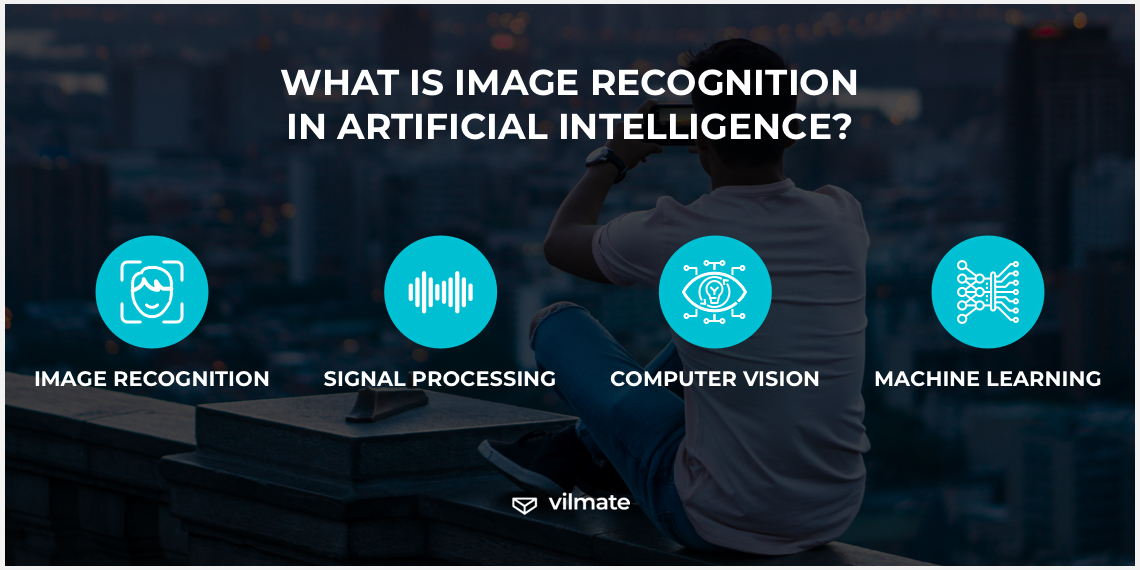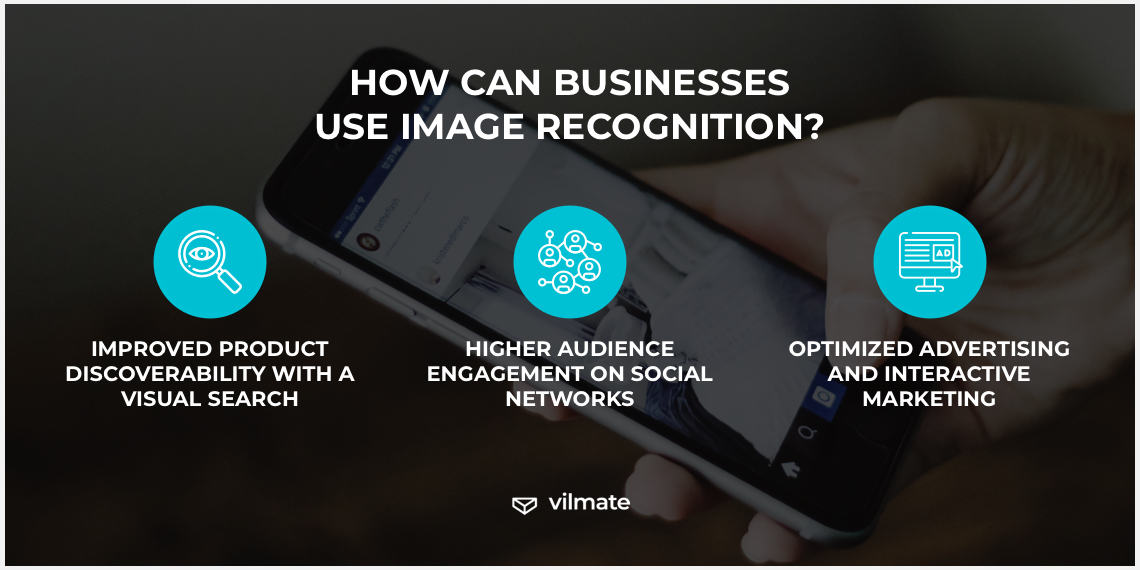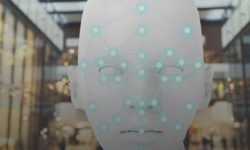How to Create an Image Recognition App?
Labels shape our perception of the world. We usually prefer knowing the names of objects, people, and places we are interacting with or even more — what brand any given product we are about to purchase refers to and what feedback others give about its quality. Devices equipped with image recognition can automatically detect those labels. An image recognition software app for smartphones is exactly the tool for capturing and detecting the name from digital photos and videos.
By developing highly accurate, controllable, and flexible image recognition algorithms, it is now possible to identify images, text, videos, and objects. Let’s find out what it is, how it works, how to create an image recognition app, and what technologies to use when doing so.
What is image recognition in artificial intelligence?
Image recognition is currently using both AI and classical deep learning approaches so that it can compare different images to each other or to its own repository for specific attributes such as color and scale. AI-based systems have also started to outperform computers that are trained on less detailed knowledge of a subject.
AI image recognition is often considered a single term discussed in the context of computer vision, machine learning as part of artificial intelligence, and signal processing. To put it in a nutshell, image recognition is a particular of the three. So, basically, picture recognition software should not be used synonymously to signal processing but it can definitely be considered part of the large domain of AI and computer vision. Let’s take a closer look at what each of the four concepts means.

Image recognition. With an image being the key input and output element, image recognition is designed to understand the visual representation of a certain image. In other words, this software is trained to extract a lot of useful information and it performs an important role to provide an answer to a question like what is the image. This is how the term image recognition is usually understood.
Signal processing. The input can be not only an image but also various signals like sounds and biological measurements. These are signals useful when it comes to voice recognition as well as for various applications like facial detection. SP is a broader field than image identification technology and mixed with deep learning, it's capable of discovering patterns and relationships that, until now, were unobservable.
Computer vision. It is a whole scientific discipline that is concerned with building artificial systems receiving information from such input sources as images, videos, or other multi-dimensional hyperspectral data. The computer vision process involves techniques such as face detection, segmentation, tracking, pose estimation, localization and mapping, and object recognition. These data are processed by the application programming interfaces (APIs), which we’ll discuss later in the article.
Machine learning. It is an umbrella term for all the above concepts. ML covers image recognition, signal processing, and computer vision. Besides, it’s a quite general framework in terms of input and output — it takes any sign for an input returning any quantitative or qualitative information, signal, image or video as an output. This diversity of requests and responses is enabled through the use of a large and complex ensemble of generalized machine learning algorithms.
How image recognition software works
Detection of images is performed using two different methods. These methods are referred to as neural network methods. The first method is called classification or supervised learning, and the second method is called unsupervised learning.
In supervised learning, a process is used to determine if a particular image is in a certain category, and then it is compared with the ones in the category that have already been detected. In unsupervised learning, a process is used to determine if an image is in a category by itself. Neural networks are complex computational methods designed to allow for classification and tracking of images.
What you should know is that an image recognition software app will most probably use a combination of supervised and unsupervised algorithms.
The classification method (also called supervised learning) uses a machine-learning algorithm to estimate a feature in the image called an important characteristic. It then uses this feature to make a prediction about whether an image is likely to be of interest to a given user. The machine learning algorithm will be able to tell whether an image contains important features for that user.
Metadata classifies images and extracts information such as size, color, format, and format of borders. Images are categorized in different tags, called information classes, and each tag is associated with an image. These information classes are used by the recognition engine to understand the "meaning" of the image.
The data used to identify images, for example: "cute baby" or "dog picture", must be labeled to be useful. This requires the data to be analyzed with information extraction techniques such as classification or translation.
So, pattern recognition in image processing is a multi-step process that includes:
- The original image detection
- Analysis and classification of the data
- Reinforcement learning
- The AI training process
- Monitoring and replaying of the training process
How to choose image recognition APIs?
Another important component to remember when aiming to create an image recognition app is APIs. Various computer vision APIs have been developed since the beginning of the AI and ML revolution. The top image recognition APIs take advantage of the latest technological advancements and give your photo recognition application the power to offer better image matching and more robust features. Thus, hosted API services are available to be integrated with an existing app or used to build out a specific feature or an entire business.
Not every company has sufficient resources for investing in building out the whole computer vision engineering team. So, the following is a list of image recognition APIs that you need to pay attention to if you want some off-the-shelf open-source solutions to make your life easier:
Google Cloud Vision API. The Google Cloud Vision API allows you to upload images or create custom datasets for image recognition. It helps you search for known human patterns, and generate images from them. It's available in the Google Cloud Platform (GCP). You can integrate this with some image processing projects, as well as in your own applications.
Amazon Rekognition. One of the best ways to do image recognition is to use this Amazon system. Amazon Rekognition offers a multiplicity of APIs that make it possible to train your own visual recognition engine and do image & video segmentation detecting and analyzing objects, faces or some explicit content, recognizing familiar faces or faces of celebrities and more.
IBM Watson Visual Recognition. The Watson Visual Recognition service on the IBM Cloud is suitable for many applications as it allows users to have flexibility in their use of the APIs. Pre-trained models provided by the Visual Recognition service can be used to build applications that have the potential to perform in many settings. This model is then trained to detect certain classes of objects.
Microsoft Computer Vision API. This image recognition software is an integral part of Azure Cognitive Services. It allows identifying and analyzing content within images. Besides, using it, you can try to train your computer vision to recognize faces and people’s emotions. It is easy to introduce the Computer Vision service into your app — just add an API call.
Clarifai API. It is one of the best image search services. It offers Community (with a free API key), Essential, and Enterprise plans to choose from. One can both use the off-the-shelf image recognition models or build their own custom-trained models. The ready-made models can detect faces, colors, clothing, recognize food, and other things. It is significantly faster than other search engines as it uses inference instead of directly searching.
How can businesses use image recognition?
The benefits of image recognition are making their way into the world. So, it’s not only the question of how to create an image recognition app but it’s also the challenge of how to build an image recognition app so that it can enhance your business. Using massive amounts of data to teach computers to identify what’s in pictures, a machine learning technique can bring about the three big positive changes we'll discuss below.

1. Improved product discoverability with a visual search. A well-trained image recognition model enables precise product tagging. Such applications usually have a catalog where products are organized according to specific criteria. This accurate organization of a number of labeled products allows finding what a user needs effectively and quickly. Thanks to the super-charged AI, the effectiveness of the tags implementation can keep getting higher, while automated product tagging per se has the power to minimize human effort and reduce error rates.
2. Higher audience engagement on social networks. Image and face recognition on social media is already a thing. Social networks like Facebook and Instagram encourage users to share images and tag their friends on them. And their trained AI models recognize scenes, people, and emotions in no time. Some networks have gone even further by automatically creating hashtags for the updated photos. It all can make the user experience better and help people organize their photo galleries in a meaningful way.
3. Optimized advertising and interactive marketing. Another benefit of using image identification technology in an app is the optimization of mobile advertising. Interactive marketing campaigns rely heavily on knowing the customer. In fact, the maximization of ad performance can be achieved in some mobile apps by redesigning them to incorporate image identification technology. After all, image identification technology is just another tool in the app marketing toolbox.
Examples of the best image recognition apps
Visionaries keep coming up with ever more interesting image recognition project ideas. Some verticals, however, are more welcoming to image recognition than the others. To illustrate the above business benefits, let’s consider some examples of how image recognition successfully works in applications from totally different industries.
>1. Vivino - wine label scanning.

Vivino is the world’s most downloaded mobile wine app that, among others, uses image recognition trained on a massive database of wine bottles and labels’ photos to build a perfect image match for your favorite wines. With Vivino, you can also order your favorite wines on demand through the app and get all sorts of stats about them, like brand, price, rating and more. Vivino is very intuitive and has easy navigation, ensuring you can get all the necessary information after taking a shot of a wine bottle you want to buy yet while at a liquor store.
2. PictureThis - tree, plant, or flower variety recognition.

PictureThis is one of the most popular plant identification apps that has a database of over 10,000 plant species. The app allows identifying plant varieties by photos. Once the photo of a plant is taken or uploaded from the phone gallery, PictureThis analyzes the image comparing it to those in its database and fetches the result. Then, it helps you determine if it's a match. Besides, you can find plant care tips, watering reminders, and nice wallpapers inside the app.
3. Zebra Medical Vision - AI-based medical diagnostic imaging.

Zebra Medical Vision is a deep learning medical imaging analytics company whose imaging analytics platform allows identifying risks and offering treatment pathways for oncology patients. This is possible due to the powerful AI-based image recognition technology. Zebra’s engine analyzes received images (X-rays and CT scans) using its database of scans and deep learning tools, thus providing radiologists the assistance in coping with the increasing workloads. In addition to implementing AI software for the identification of potential risks, Zebra Medical Vision has developed numerous applications, which simplify the visual assessment and guidance of patients with cancer.
Conclusion
Machine learning, computer vision, and image recognition are obviously becoming a common thing and they are not something extraordinary anymore. It’s difficult to create an image recognition app and succeed in doing so. However, with the right engineering team, your work done in the field of computer vision will pay off. Research the market, define a roadmap for your project, choose APIs, and decide how exactly you are going to incorporate image recognition and related technologies into your future app.
Image recognition software is now present in nearly every industry where data is being collected, processed, and analyzed. Computer vision applications are constantly emerging in the mobile industry as well. So, think through the option of taking advantage of it, too, and optimize your business operations with IR.

© 2020, Vilmate LLC




